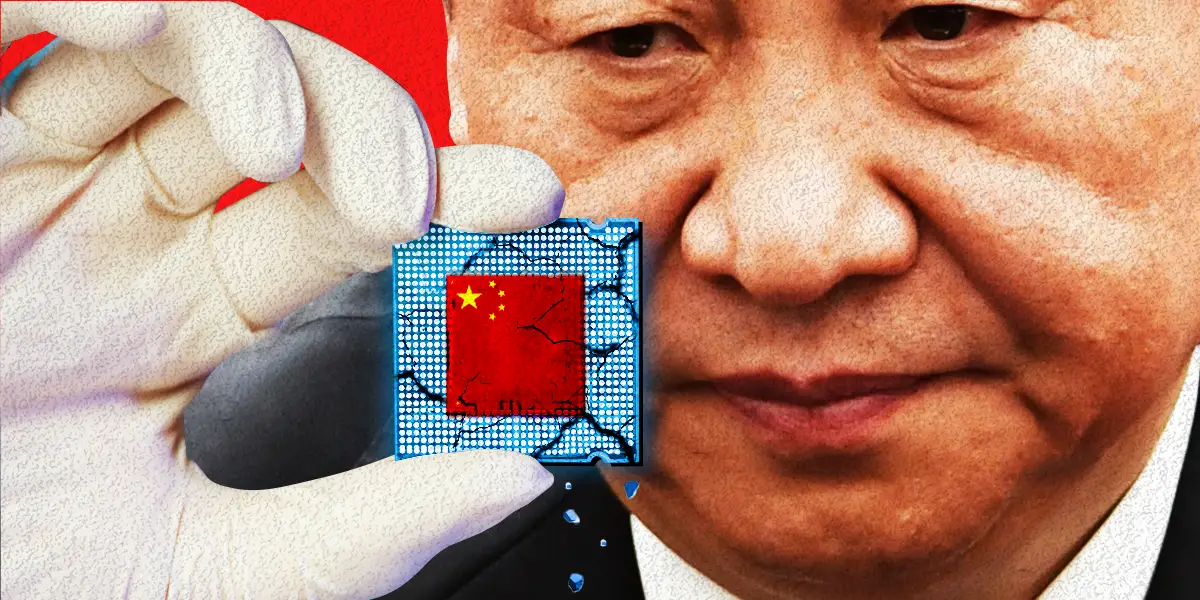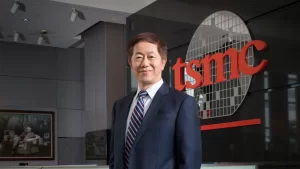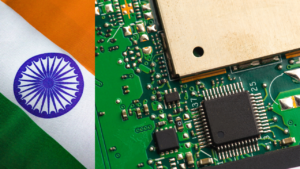How does china looks at semiconductors
The Chinese government sees semiconductors as a strategic industry, and it is willing to use its economic and political power to secure access to the technology.
The following are some of the ways that China is looking at semiconductors:
Self-sufficiency: China aims to become self-sufficient in the production of semiconductors by 2025. This is a ambitious goal, but the government is investing heavily in the domestic semiconductor industry.
Technology transfer: China is also trying to acquire foreign semiconductor technology through mergers and acquisitions, joint ventures, and espionage.
Export controls: China has imposed export controls on key semiconductor technologies. This is intended to prevent its competitors from gaining access to these technologies.
International cooperation: China is also cooperating with other countries in the development of semiconductors. This includes joint research projects and the establishment of chip manufacturing facilities.
But most importantly, China is trying to become a smart army using latest technologies. Lets find out how?
The curious case of China
China’s perspective on semiconductor usage is displayed in several ways.
Imports: The country imports a majority of its chips, primarily for use in consumer electronics, and these finished electronic products are then re-exported to growing markets in Asia, Africa, and Latin America.
Sustainable energy: China is also looking to transition towards eco-friendly energy platforms, and electric vehicles (EVs) play a crucial role in this strategy.
Over the past few years, China has faced challenges from floods and droughts, impacting people’s lives, economic growth, and productivity.
These environmental concerns, coupled with China being one of the world’s top carbon dioxide emitters, have compelled the country to focus on EVs and other technological advancements to combat the effects of climate change.
Challenge: No domestic capacity
However, China faces a paradox. Despite its environmental goals, it lacks its own semiconductor fabrication facilities (fabs) and the capability to domestically produce the necessary chips.
This absence of local manufacturing capacity adds complexity to their efforts.
Challenge: Water shortage
Interestingly, semiconductor production itself demands substantial quantities of electricity and water, exacerbating the very climate conditions they aim to alleviate.
For example, Intel, a major player in the industry, consumes a significant nine billion gallons of water annually for its fab in California.
Moreover, the wastewater generated contains toxic elements and high metallic content, necessitating treatment before disposal.
The recent news about Taiwan Semiconductor Manufacturing Company (TSMC) establishing a plant in the arid state of Arizona in the US raises questions. TSMC, a prominent chip manufacturer, requires around 63 million tons of water annually.
Even in Taiwan, which is grappling with a severe drought, the government redirected water from farmland and imposed water access restrictions on certain cities to support TSMC in meeting its manufacturing targets.
However, the country’s lack of domestic chip fabrication capabilities contrasts with its environmental objectives. Semiconductor manufacturing’s resource-intensive nature, particularly water usage, adds complexity to China’s pursuit of climate-friendly technologies.
Read more: Why China is investing 100s of Billion Dollars on Older Tech Nodes?
China’s miliatariziation has strong semiconductor angle
Semiconductors also have a significant role in China’s expanding military aspirations.
Before becoming the Chairman of the Chinese Communist Party (CCP), President Xi expressed dissatisfaction with the People’s Liberation Army (PLA)’s operations.
Since 2012, he has worked to modernize the force, shifting it from a traditional border-guarding guerrilla army to a technologically advanced entity capable of projecting power globally.
Pillars of Chinese army
China has directed its attention towards mechanization, informatization, and intelligentization, pursuing these goals in a sequential manner that often overlaps.
The PLA’s shift towards mechanization began in the 1980s, aiming to equip units with modern equipment such as electronic warfare systems, armored vehicles, and infantry fighting vehicles.
Originally focused on safeguarding fixed borders, these efforts evolved to accommodate naval and air operations by 2020.
According to Xi’s 2014 guidelines, outlined in ‘China’s Military Strategy’, the new PLA centers around four main pillars: information dominance, integrated joint operations, prioritizing the maritime domain, and expanding maritime territory.
In the new strategy of the People’s Liberation Army (PLA), one of the key foundations is achieving information superiority for their own side while denying crucial information to the enemy.
This disruption is intended to affect the enemy’s cognitive capabilities and coordination of forces.
This principle constitutes one of the four main pillars of the new PLA strategy.
The other three pillars include integrated joint operations, highlighting the significance of the maritime domain in China’s overall strategy, and redefining the extent of China’s maritime territory beyond its immediate surrounding waters.
This strategic approach naturally emphasizes the integration of space, cyber, and electromagnetic spectrum capabilities.
The concept of “informatisation” has been active since the 1990s within the People’s Liberation Army (PLA).
The PLA’s goal is to secure victories in local conflicts by leveraging the cyber and space domains, unmanned systems, and long-range precision missiles. In 2020, the PLA announced its intention to achieve full informatisation by 2027.
This strategy heavily relies on smart weapons, which in turn depend on robust data processing capabilities and edge computing. These capabilities are underpinned by specialized heavy-duty AI chips.
The subsequent phase in China’s military strategy is “intelligentization.”
In his recent book, Pravin Sawhney references a 2018 monograph by Senior Colonel Zhang Yongchao titled ‘Next-Generation Warfare: Intelligent Warfare?’.
This document outlines three phases of intelligent warfare.
- The initial stage involves distributed intelligent warfare, where a highly intelligent brain oversees less intelligent combat units.
- The intermediate phase entails a node-based structure in which several intelligent nodes manage groups of intelligent combat units. This phase incorporates extensive utilization of big data, cloud computing, and AI algorithms.
- The most advanced stage, planned for achievement by 2035, envisions independent military operations carried out by highly intelligent terminal and combat units working autonomously to achieve wartime objectives.
Given these ambitions, China’s pursuit of indigenizing its chip industry is essential. China’s strategic focus has evolved through mechanization, informatization, and intelligentization – pursued sequentially but often overlapping.
President Xi’s objective of turning China into a chip industry leader is necessitated by this trajectory.
The sequential pursuit of these goals, although with overlapping timelines, showcases China’s commitment to modernizing its military approach in line with evolving global tactics and technologies.
Read more: China’s Chip Hunger: How the Country Is Quietly Recruiting Top Talent to Close the Gap
China’s failed attempts to win Chip war
Back in 2014, China’s State Council established an ambitious objective: to emerge as a dominant force in the global semiconductor industry by 2030. This goal was reiterated in the ‘Made in China 2025’ plan.
However, entering the competitive chip manufacturing market has proven to be a formidable challenge.
The vast majority of small and medium-sized enterprises (SMEs) in this field are concentrated in the Western countries, which has posed a significant obstacle for China.
Originally, China aimed to produce 40% of the world’s semiconductors by the year 2020, with a subsequent target of 70% by 2025.
Unfortunately, these ambitious targets have had to be scaled back due to China achieving only a minute fraction of these goals.
The primary stumbling block for Chinese companies is not merely access to the necessary manufacturing equipment, but also a lack of practical experience and technical expertise in the intricate field of chip production.
Localization is not possible
China’s pursuit of establishing self-sufficient industries also runs counter to the prevailing trend of globally integrated supply chains.
Many international companies collaborate in these supply chains, each contributing their specialized skills to create a free-market ecosystem.
However, China’s approach diverges from this norm, as they are striving to handle all aspects of chip manufacturing themselves.
China wants all critical technology
These efforts align with the directives of President Xi Jinping, who in November 2018 led the first publicly known study session on artificial intelligence (AI) by the Politburo.
During this session, President Xi emphasized China’s need to assert control over critical and core AI technologies.
Similarly, the New Generation AI Development Plan (AIDP) released in July 2017 acknowledged China’s deficiencies in high-end chip development.
The AIDP called for advancements in various areas, including intelligent computing chips and systems, adaptable computing chips inspired by the human brain, and revolutionary perception chips.
In essence, China’s aspiration to become a global leader in semiconductor technology faces significant challenges due to the Western dominance of the field, limited experience, and an approach that contrasts with the trend of collaborative global supply chains.
These efforts are consistent with President Xi’s vision for technological sovereignty, particularly in AI, as highlighted in the AIDP’s objectives for enhancing chip technologies.
Conclusion:
The future of China’s semiconductor industry is uncertain. The country faces a number of challenges, including the ongoing trade war with the United States, the shortage of skilled workers, and the difficulty of transferring advanced technology.
However, China is determined to become a major player in the global semiconductor industry, and it is making significant progress towards this goal.
P.S: The Editor would like to thank “Role of Semiconductors in India’s National Security” By Akshay Upadhyay & his research








